

Margaret Nagle, Head of Policy, Regulatory and Community Affairs, Wing, describes the company’s London Health Bridge project.


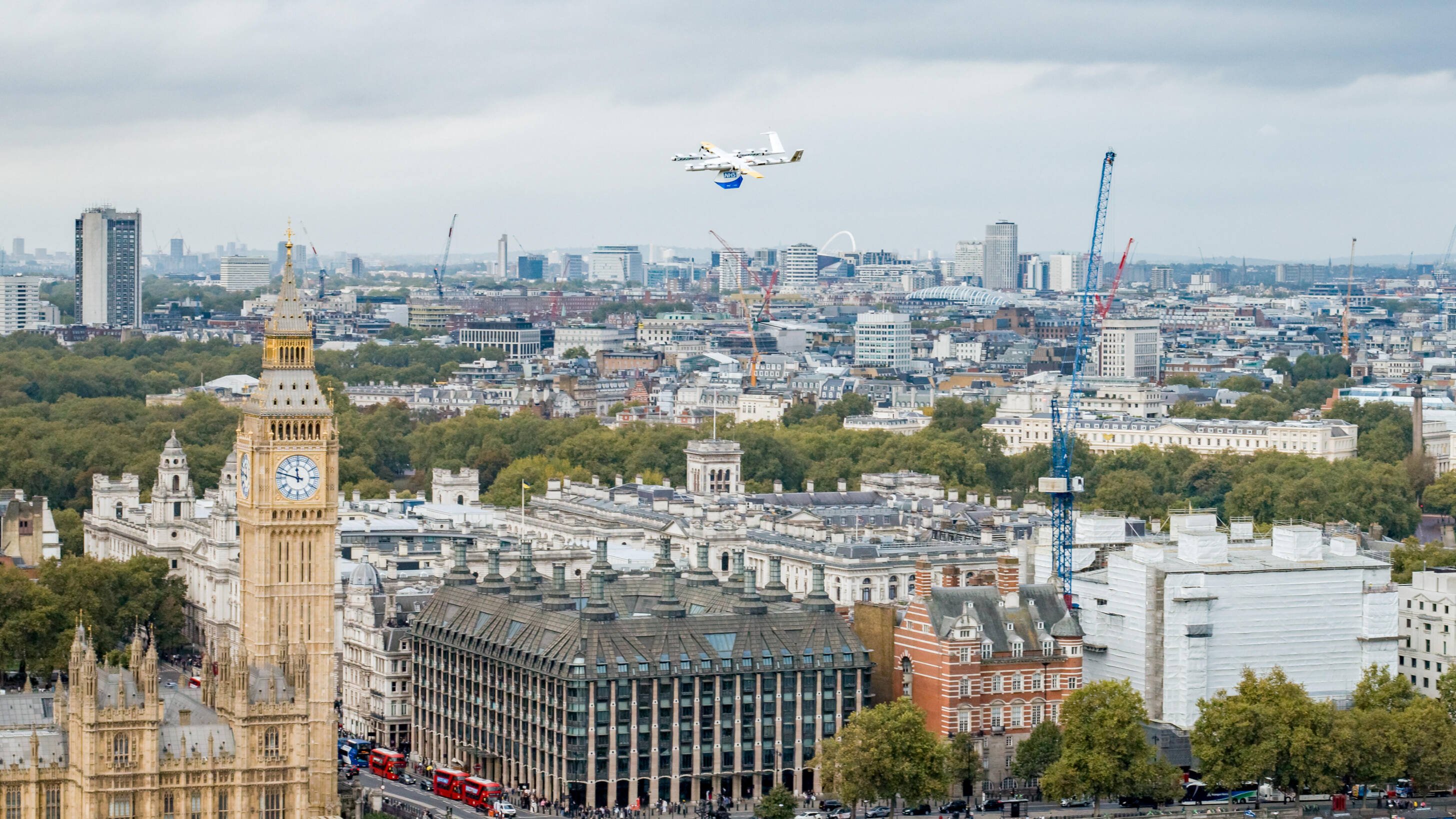
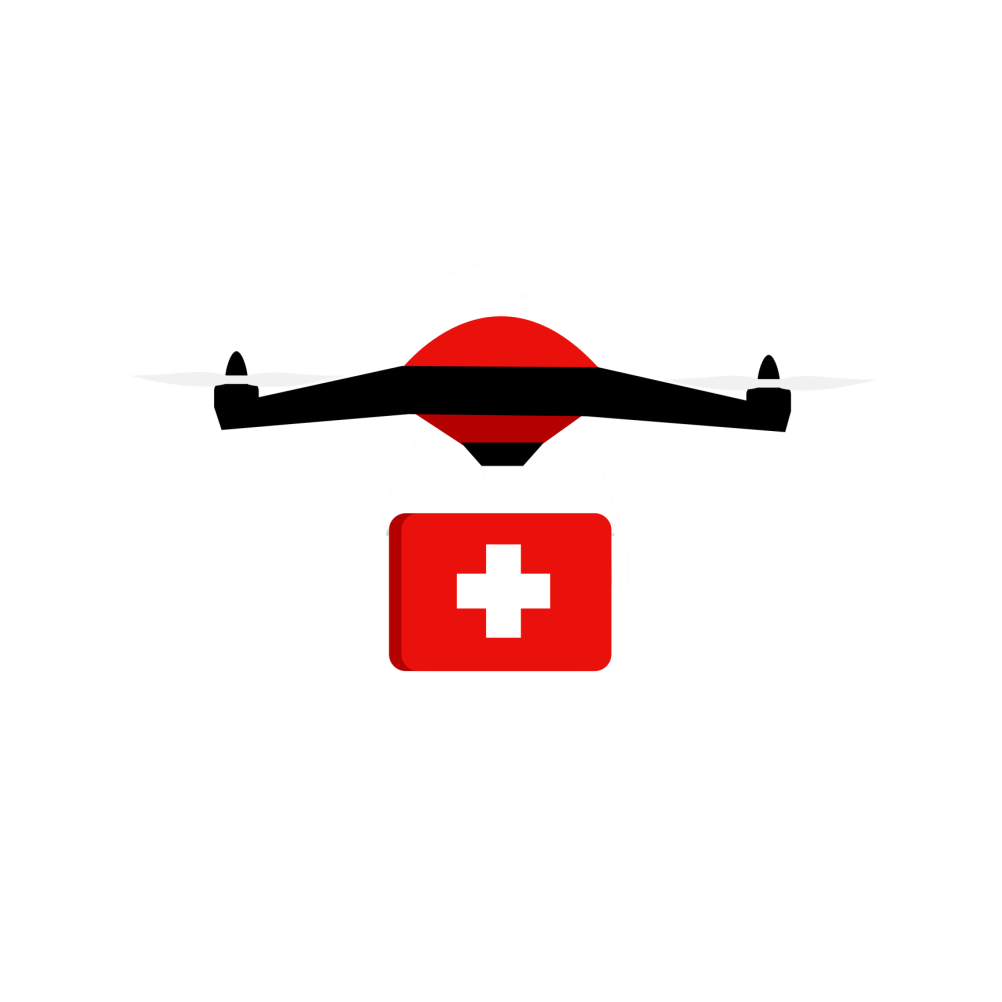
In 2025, we are seeing the results of thinking big about the benefits of drone delivery. Through an unprecedented operation in central London, the United Kingdom has helped the uncrewed aviation community take a leap forward in implementing highly automated operations that make a difference for the lives of UK residents and patients today.
On-demand medical drone deliveries between Guy's and St Thomas' Hospitals in central London, operating in airspace essentially between The Shard and the London Eye, were previously unfathomable. But these flights now occur multiple times a day and have already had significant impact for patient outcomes thanks to a broad collaboration between Guy's & St Thomas' NHS Foundation Trust, healthcare logistics company Apian, and Wing, as well as the UK Civil Aviation Authority (UK CAA) and NATS, the UK's air traffic control provider.
In about six months, the UK’s first routine drone delivery service at Guy’s and St Thomas’ NHS Foundation Trust delivered over 5,000 patient samples.
By being able to send pathology samples on demand and by air between Guy’s and St. Thomas’ rooftops – rather than the crowded streets of London via vans or motorbike – blood samples arrive for analysis in two minutes instead of an average of 30 minutes or more. This significantly reduces the time it takes for these samples to be tested, and results provided – a critical metric for these particular patients who are undergoing surgery and are at high risk of bleeding disorder complications.
Close


Advanced operations
Each sample carried by air enables an opportunity to expedite and improve a patient outcome. The operations between Guy’s and St. Thomas’ hospitals proves that advanced BVLOS operations truly can advance patient care. We’ve helped speed up patient diagnoses so they can receive their treatment quicker, confirm their discharge so they can get back to the comforts of home and provide faster results to evaluate and update their medication.
Beyond the direct patient and provider advantages, drone delivery also supports environmental benefits. Compared with non-electric cars, drones reduce CO2 emissions up to 99 per cent, alleviating congestion in central London and supporting efforts to reduce emissions. With the NHS accounting for four per cent of England’s greenhouse gas emissions, this is an opportunity to help support the best possible patient care while improving sustainability.
These operations mark a landmark achievement in BVLOS automated drone operations in a major urban area. Being able to deliver blood samples on a routine basis for Guy’s and St Thomas’ over a congested city is a key step forward in the opportunity to bring the benefits of drone delivery to urban communities. Flying within London's complex airspace demonstrates the potential for safe, routine drone integration as well as a path for scalable drone services in UK airspace.
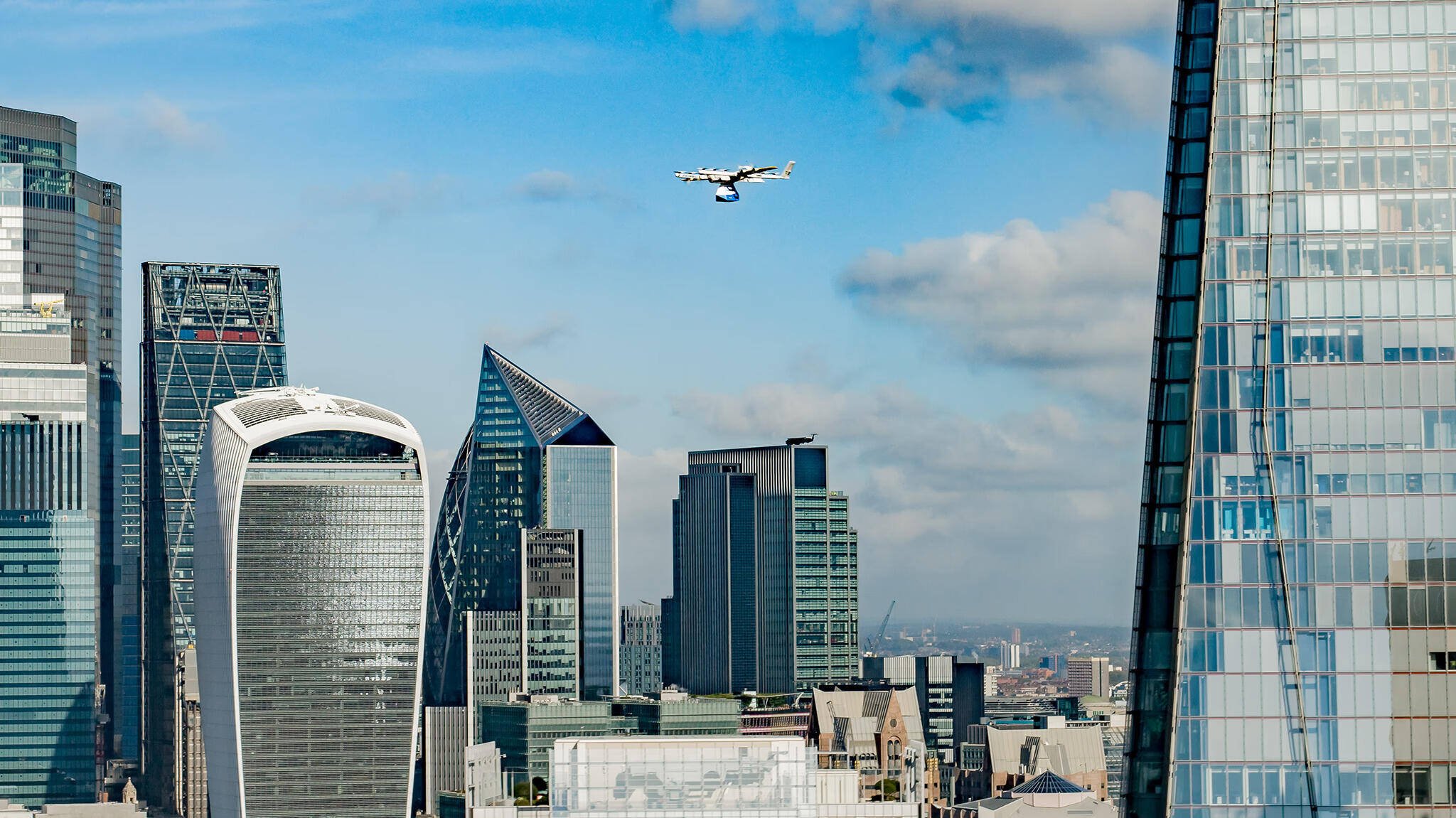
Building on a 500,000 commercial delivery baseline
Integrating into London airspace
The Guy's and St Thomas' Hospitals operations were made possible through the support from the UK CAA and the regulatory foundations they developed to enable the London Health Bridge trial.
Leveraging the available Temporary Reserved Area (TRA) pathway provided by the Civil Aviation Authority and coordinated with NATS, the drones operate within designated airspace between the two hospitals. It represents a significant development from the UK’s airspace authorities to approve BVLOS operations in one of the most urban environments in the world: a clear indication of the readiness of the industry to integrate into our daily lives.
All flights are overseen by a certified and trained Pilot in Command and leverage Wing’s highly automated drones that plot their own flightpath within the approved service area. Flying at approximately 70m or about 230 feet above ground level (AGL) and at up to 100km/h or 60 mph, the drones spend just under four minutes round trip in the air.
The London Health Bridge partners worked to rigorously evaluate the safety of the operations, build a programme that would have an immediate positive impact on healthcare logistics, and collaborate in-depth with other airspace stakeholders and the local community. Wing’s lightweight aircraft and infrastructure, highly automated system, and proven operations were uniquely positioned to bring this work to reality.
Wing’s ability to safely, efficiently and effectively deliver these high-impact and time-sensitive deliveries comes from having built its operational foundations in residential deliveries – a use case that centres around safety alongside convenience, speed, precision and the gentle delivery of goods.
We’ve delivered packages to and from rooftops, parking lots, yards, driveways, and even public parks – including groceries, hot food and coffee, cold ice cream, and household healthcare products. With over 500,000 commercial deliveries completed on three continents, leveraging systems designed for highly automated beyond visual line of sight (BVLOS) operations, the translation to hospital-to-hospital medical deliveries was a logical next step.
Medical deliveries, especially for samples awaiting analysis, need to be convenient for the hospital staff, precise in flight, and pristine upon arrival. In these operations four simple steps take place to accomplish exactly that:
1. A transport of blood samples is ordered via Guy’s pre-existing records system and packed
2. A hospital porter brings the package to the Wing “Nest,” which is already located at the hospital
3. The package is securely loaded onto the drone
4. The drone flies to St Thomas’ rooftop in two minutes and lowers the package at the delivery spot – arriving within centimeters each time. In minutes, it can be signed into a lab and processed.
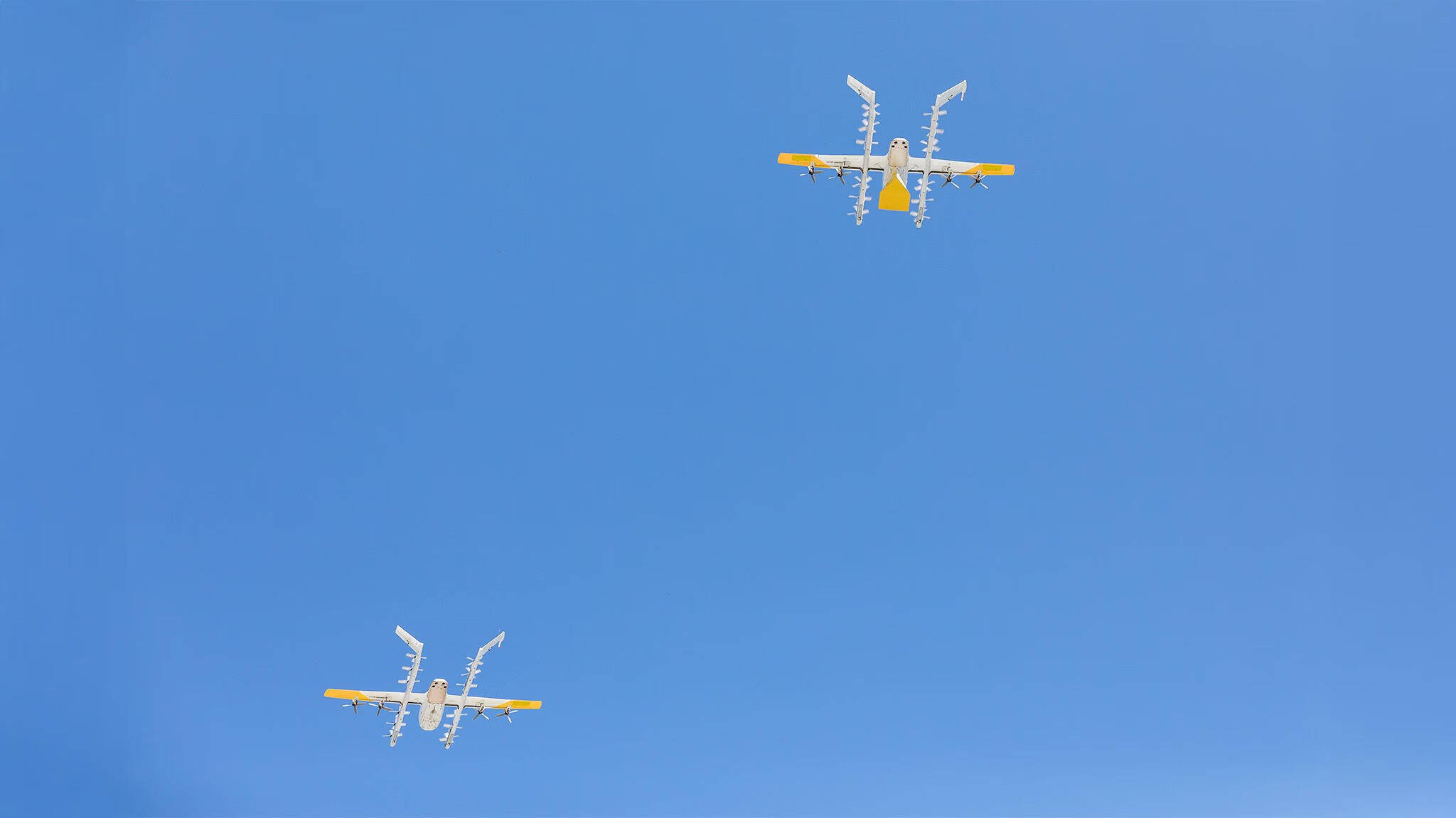



Margaret Nagle, Head of Policy, Regulatory and Community Affairs, Wing, describes the company’s London Health Bridge project.

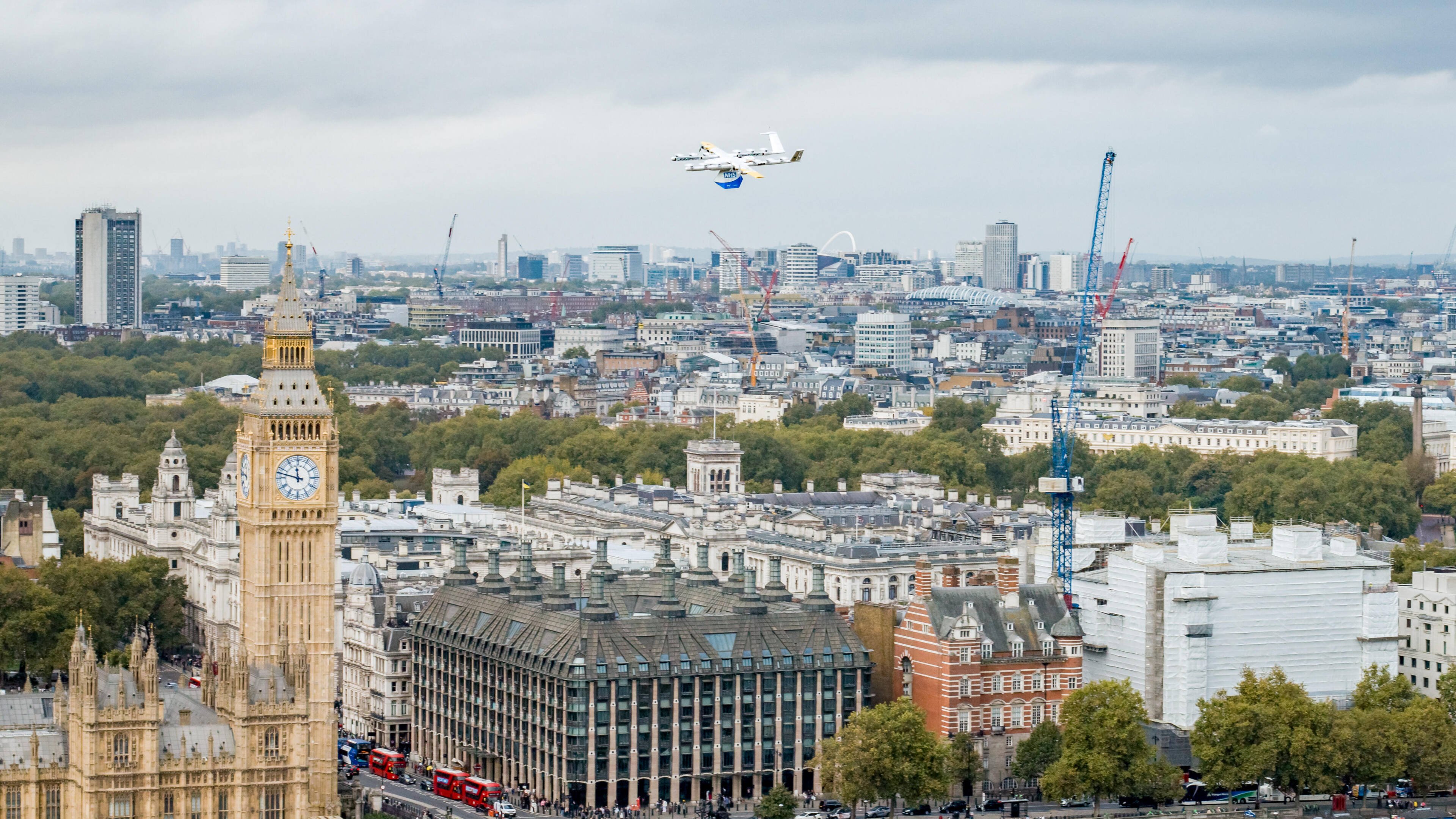

On-demand medical drone deliveries between Guy's and St Thomas' Hospitals in central London, operating in airspace essentially between The Shard and the London Eye, were previously unfathomable. But these flights now occur multiple times a day and have already had significant impact for patient outcomes thanks to a broad collaboration between Guy's & St Thomas' NHS Foundation Trust, healthcare logistics company Apian, and Wing, as well as the UK Civil Aviation Authority (UK CAA) and NATS, the UK's air traffic control provider.
In about six months, the UK’s first routine drone delivery service at Guy’s and St Thomas’ NHS Foundation Trust delivered over 5,000 patient samples.
By being able to send pathology samples on demand and by air between Guy’s and St. Thomas’ rooftops – rather than the crowded streets of London via vans or motorbike – blood samples arrive for analysis in two minutes instead of an average of 30 minutes or more. This significantly reduces the time it takes for these samples to be tested, and results provided – a critical metric for these particular patients who are undergoing surgery and are at high risk of bleeding disorder complications.
In 2025, we are seeing the results of thinking big about the benefits of drone delivery. Through an unprecedented operation in central London, the United Kingdom has helped the uncrewed aviation community take a leap forward in implementing highly automated operations that make a difference for the lives of UK residents and patients today.

Wing’s ability to safely, efficiently and effectively deliver these high-impact and time-sensitive deliveries comes from having built its operational foundations in residential deliveries – a use case that centres around safety alongside convenience, speed, precision and the gentle delivery of goods.
We’ve delivered packages to and from rooftops, parking lots, yards, driveways, and even public parks – including groceries, hot food and coffee, cold ice cream, and household healthcare products. With over 500,000 commercial deliveries completed on three continents, leveraging systems designed for highly automated beyond visual line of sight (BVLOS) operations, the translation to hospital-to-hospital medical deliveries was a logical next step.
Medical deliveries, especially for samples awaiting analysis, need to be convenient for the hospital staff, precise in flight, and pristine upon arrival. In these operations four simple steps take place to accomplish exactly that:
1. A transport of blood samples is ordered via Guy’s pre-existing records system and packed
2. A hospital porter brings the package to the Wing “Nest,” which is already located at the hospital
3. The package is securely loaded onto the drone
4. The drone flies to St Thomas’ rooftop in two minutes and lowers the package at the delivery spot – arriving within centimeters each time. In minutes, it can be signed into a lab and processed.
Building on a 500,000 commercial delivery baseline


Integrating into London airspace
The Guy's and St Thomas' Hospitals operations were made possible through the support from the UK CAA and the regulatory foundations they developed to enable the London Health Bridge trial.
Leveraging the available Temporary Reserved Area (TRA) pathway provided by the Civil Aviation Authority and coordinated with NATS, the drones operate within designated airspace between the two hospitals. It represents a significant development from the UK’s airspace authorities to approve BVLOS operations in one of the most urban environments in the world: a clear indication of the readiness of the industry to integrate into our daily lives.
All flights are overseen by a certified and trained Pilot in Command and leverage Wing’s highly automated drones that plot their own flightpath within the approved service area. Flying at approximately 70m or about 230 feet above ground level (AGL) and at up to 100km/h or 60 mph, the drones spend just under four minutes round trip in the air.
The London Health Bridge partners worked to rigorously evaluate the safety of the operations, build a programme that would have an immediate positive impact on healthcare logistics, and collaborate in-depth with other airspace stakeholders and the local community. Wing’s lightweight aircraft and infrastructure, highly automated system, and proven operations were uniquely positioned to bring this work to reality.
Advanced operations
Each sample carried by air enables an opportunity to expedite and improve a patient outcome. The operations between Guy’s and St. Thomas’ hospitals proves that advanced BVLOS operations truly can advance patient care. We’ve helped speed up patient diagnoses so they can receive their treatment quicker, confirm their discharge so they can get back to the comforts of home and provide faster results to evaluate and update their medication.
Beyond the direct patient and provider advantages, drone delivery also supports environmental benefits. Compared with non-electric cars, drones reduce CO2 emissions up to 99 per cent, alleviating congestion in central London and supporting efforts to reduce emissions. With the NHS accounting for four per cent of England’s greenhouse gas emissions, this is an opportunity to help support the best possible patient care while improving sustainability.
These operations mark a landmark achievement in BVLOS automated drone operations in a major urban area. Being able to deliver blood samples on a routine basis for Guy’s and St Thomas’ over a congested city is a key step forward in the opportunity to bring the benefits of drone delivery to urban communities. Flying within London's complex airspace demonstrates the potential for safe, routine drone integration as well as a path for scalable drone services in UK airspace.